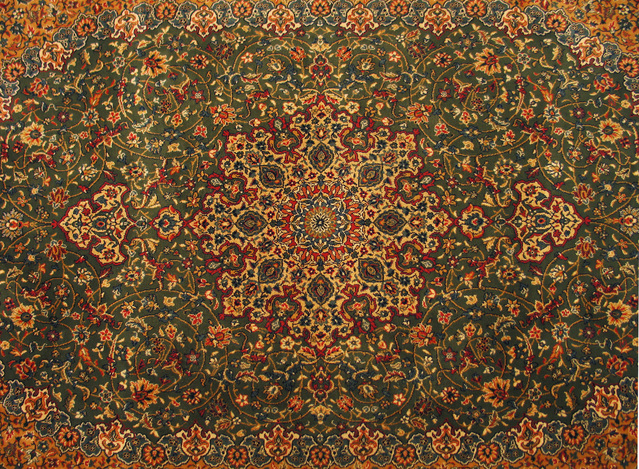Aside from its conquering of the world, Persia is best-known for its carpet-weaving. When most people hear the words “Persian carpet,” they typically think of rugs with extremely ornate designs and equally extreme price tags. And that’s a pretty accurate description.
From the moment the Greeks mentioned them in writings, Persian carpets have had a reputation for being something only the most elite and wealthy individuals owned; esteemed for their high artistic value.
Persian weaving techniques vary from town to town, as does the colors and motifs featured on the carpets they produce. Traditionally, carpets were produced by nomadic tribes.
A Look Back at the History of Persian Carpets
Historians are still unsure of when Persians began weaving carpets simply because we don’t have much evidence – carpets are vulnerable to destruction from rodents and insects.
But we do know that carpet weaving in the region dates back to at least 400 BC. The famous Pazyryk carpet, which is largely considered the oldest carpet in the world, was found in a Scythian nobleman’s grave in Siberia. Radiocarbon dating indicates that the carpet was created in the 5th century BC.

The Pazyryk carpet is about 9ft by 6.5ft., and features about 232 knots per square inch. The advanced techniques used to weave the carpet suggests that this art form was well developed and therefore, had likely been around for quite some time before 400 BC.
Today, the tradition of carpet weaving is still alive and well in Iran and other regions that were formerly a part of the Persian Empire. Despite increased competition from countries with lower wages and cheaper methods of production, traditional Persian carpets are highly sought after and prized for their artistic value.
How Traditional Persian Carpets Are Made
While you will find modern carpets that imitate the design and weaving method used by Persians, the most valuable and popular carpets are those made in the traditional way.
Sheep’s wool is the most common material type, although the quality can vary from one region to the next depending on the climate and the breed of sheep. Some fine Persian rugs are made entirely of silk, but these are typically hung as tapestries on the wall or used as pillows rather than traditional carpets.
Modern rugs also feature cotton on the wefts and warps. Cotton is preferred here because it can be spun more tightly and is more tolerant of tension, which makes it an ideal choice for the rug’s foundation.
Wool, cotton and silk fibers spun mechanically or by hand to create yarn.
Natural plant and insect dyes are the preferred choice even for modern carpets, although synthetic dyes are sometimes used.
Weaving techniques are complex and vary between different regions. You’ll find that there are several provinces that produce Persian carpets, and many have their own weaving techniques and motifs.
The ancient art of Persian carpet weaving dates back to at least 400 BC, and they’re still highly sought after even today. Despite rising and falling in popularity throughout history, Persian rugs hold high artistic and utilitarian value to this day.
